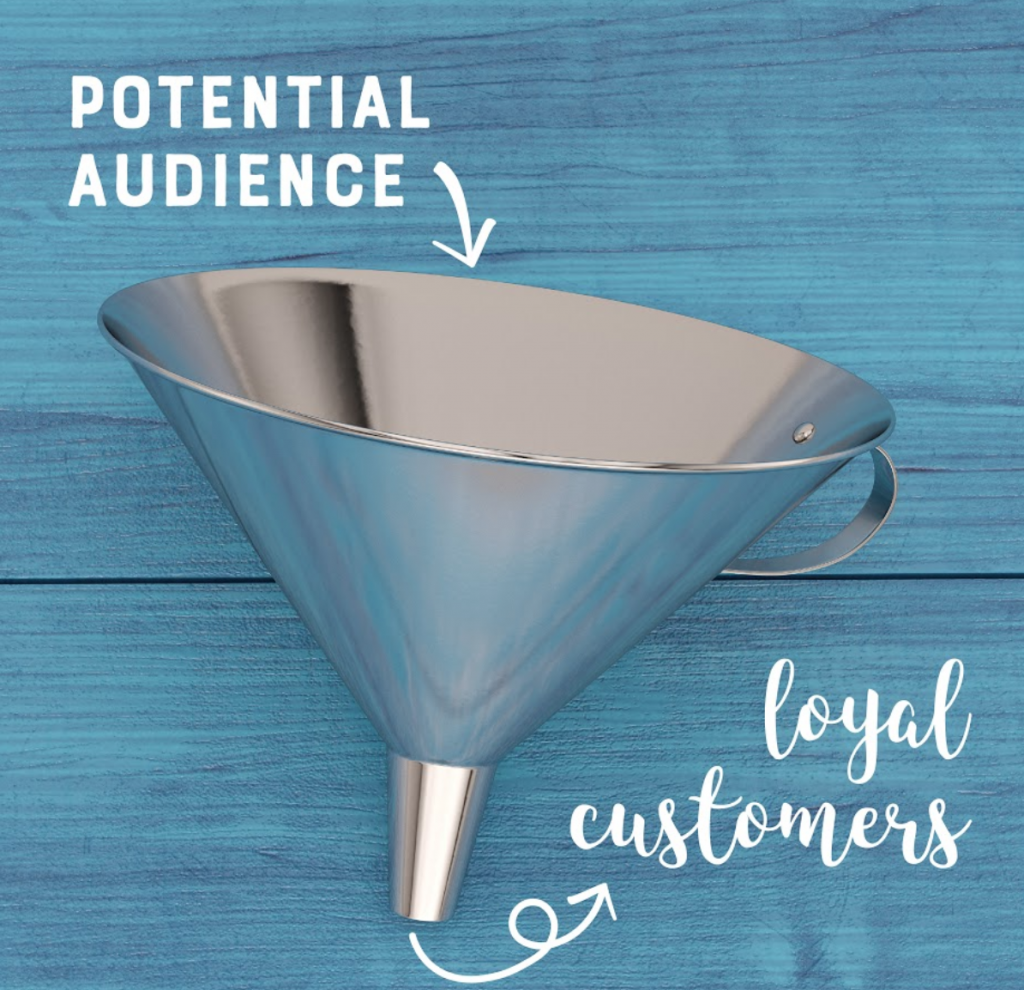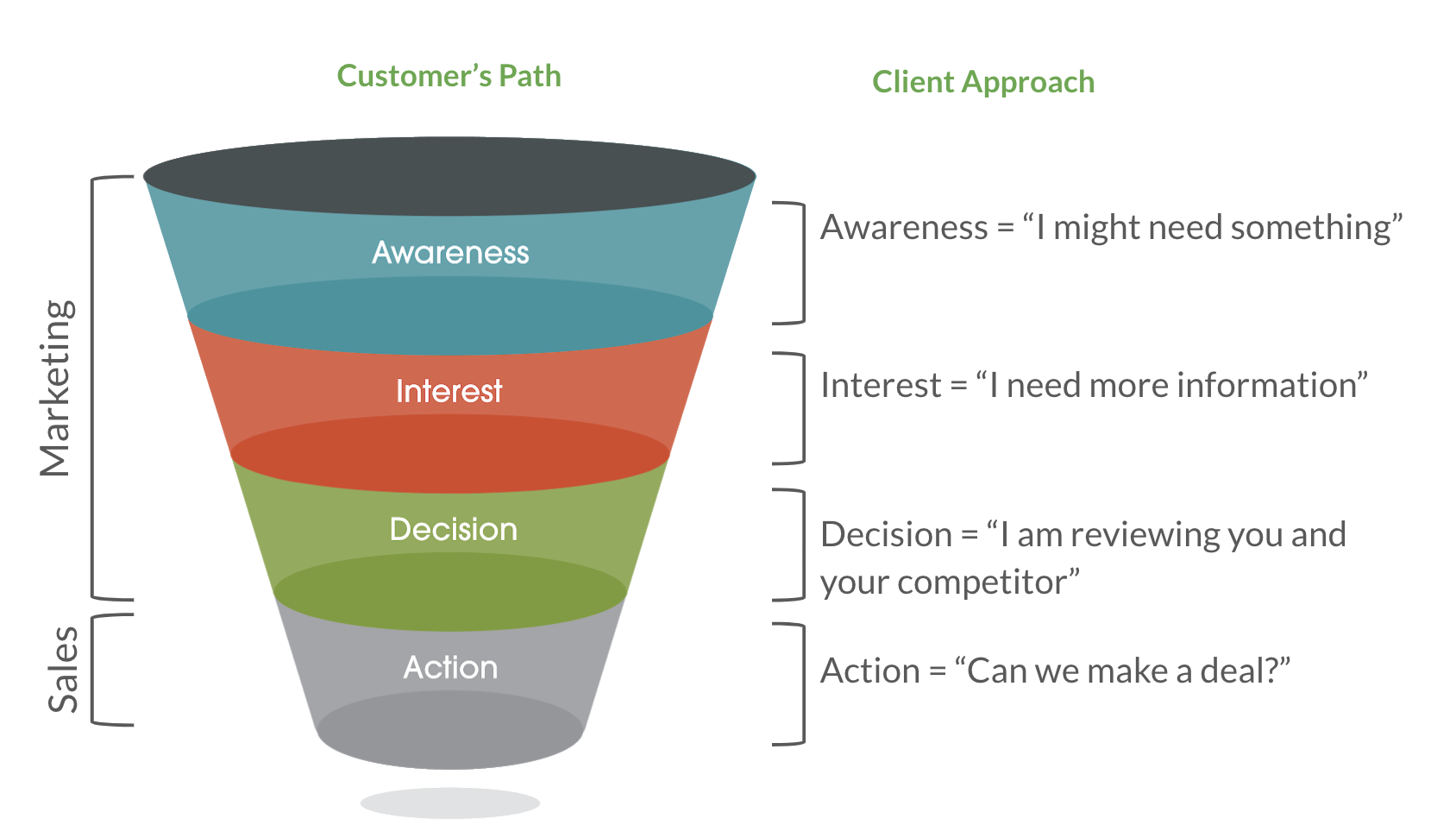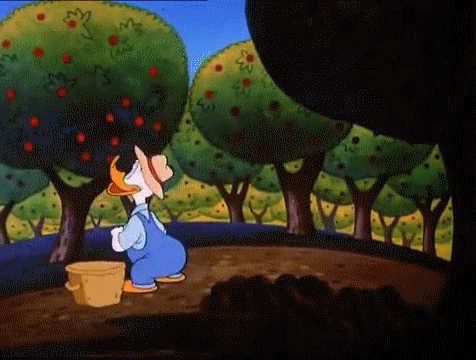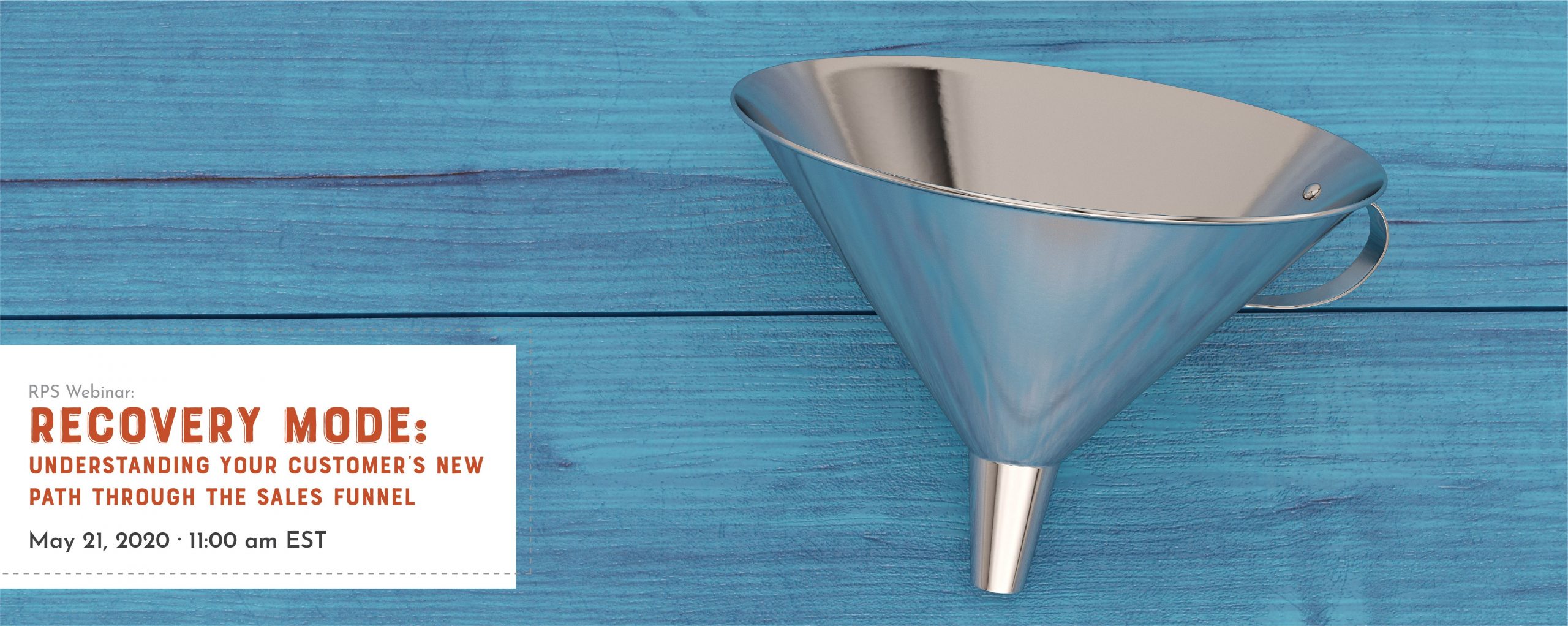Siva Devaki, founder of MassMailer, Inc., once said “Sales is not about selling anymore, but about building trust and educating.” COVID-19 is changing the way consumers gather information and make purchasing decisions as a result of spending more time at home. Social media use has spiked and while many businesses couldn’t continue selling to people like they used to during this time, the wisest have used this opportunity to continue building relationships with their audiences and sharing helpful information. They are using this time to pave the way for their audience to eventually become customers because they understand how the sales funnel works and what their role in an audience member’s journey through it.
What is the sales funnel?

The sales funnel is an illustration of the journey every person goes through when they make a purchasing decision. The reason this funnel is so important is because it illustrates how you need to show up for your audience during the entire decision-making process and outlines the different types of info they’ll need through each stage, and it also allows you to build trust with them on their journey by sharing your expertise and other information that builds your credibility in your audience members’ eyes.
The Stages of the Sales Funnel
- Awareness: The stage where audience members first learn of a brand, product, or service. In some cases, the audience members may not even realize their problem or need so they are just soaking in information at this point.
- Interest: In this stage, audience members are learning more about a product, service, or solution and while they are interested, they aren’t ready to make a purchase or sign a contract yet.
- Decision: In the decision stage, audience members are becoming closer to converting into a customer and spend this time comparing options from different options to make sure they are choosing the best fit for their specific needs.
- Action: At this point in the funnel, audience members are ready to take the next step and sign a contract or make a purchase.

There is also a stage of the sales funnel called re-engagement. This stage is specific to audience members that have purchased from you before and may consider your offerings again. They follow a similar journey as before, but the process is typically quicker because they already have a relationship with you; they just might need to learn more about any new offerings before they decide to go with you again.
2 Goals for Marketing

Now that you are more familiar with the sales funnel and the customer’s journey, let’s talk about goals for marketing. While you can make some pretty specific goals, at the end of the day these goals are really just subsets of two main goals. You’re either 1) working to convert your audience or 2) to grow it. In times like the ones we have faced recently, you may not be able to convert as many audience members, but you can always work on growing your audience!
But Remember It’s Not Just a Numbers Game

One thing to remember before you dive in too deeply is that sales isn’t just a numbers game. The “sales is a numbers game” strategy has been preached for years, telling people that in order to get customers and be successful, you need to make as many connections as possible and fill your pipeline with as many prospects as possible and that will then result in a certain number of conversions.
While it can be helpful to build up your pipeline, it’s important to remember that everyone you meet is not a prospect. Sales is just as much, if not more about your approach and building a relationship with your audience, than it is about having a certain number of leads in the pipeline and how many conversions you can make happen. And building relationships is where audience growth really starts to take place.
Hunting vs. Harvesting

We love how Allan Dib illustrates the process of marketing and capturing leads in his book The 1-Page Marketing Plan. He breaks it into two approaches, hunting and harvesting.
In the hunting approach, he compares it to someone who hunts daily to provide food for their family – some days they are successful and others the effort yields no results. The pressure is there daily and for businesses who take the hunting approach, it’s much the same, relying on cold calls, spending lots of money, time and energy on efforts that might bring them closer to a sale to people who may not be in their target market.

Now think of a farmer who plants seeds and waits for them to grow until they are ready to harvest. During this time of waiting, the farmer might water the seeds or provide nourishment, nurturing them until the time is right for harvesting. When you market with this approach, you’re putting your message out into the world in a way that will help you connect with audience members who are interested in what you do, rather than sending a message with an attempt to make an immediate sale. As interest builds and people reach out to you, you collect their contact information and follow up to provide any materials or resources that will build value for them and trust with you as they journey through the sales funnel. As you nurture this relationship, the sale will come if it is the right decision for your customer.
So how do you start to nurture leads and embark on the harvesting approach? You start mapping your marketing plan to the sales funnel to make sure you’re providing leads with the information they need to support their decision making process at the right place and time.
Mapping Your Channels to the Sales Funnel
When you make a marketing plan based on your customer’s journey through the sales funnel, you need to look at your various marketing channels and see where they fall in the funnel to make sure you’re applying the channels your audience uses in the right places. Take the time to:
- Review the channels you’re already using
- Use your audience profiles (if you have them) to help you select any new marketing channels you need to explore using
- Prioritize your current and new channels and map them out into the various stages of the sales funnel

With a better understanding of the way people make purchasing decisions, you are better able to select and prioritize your marketing channels based on the sales funnel. Take the time to cross reference your current and new channels to ensure you have what you need in place to support your audience members’ journeys through the sales funnel.
Points to Consider When Prioritizing Marketing Channels

As you’re looking at your current marketing channels and any potential new channels, keep the following questions in mind to help you narrow your choices.
- How probable does it seem that this channel could work?
- What will it cost to acquire a customer in this channel?
- How many customers can you expect to acquire through this channel?
- What is the timeframe needed to run tests?
As you consider these questions, list out your current marketing channels and review what’s working and what isn’t so you determine what to keep, drop, and add to your mix. As you start using these newly prioritized channels, be sure to use any data available (email marketing stats, social media insights, Google Analytics, etc.) to help you measure the effectiveness and pivot as needed to help guide your audience to your organization.
Moving Forward
Now that you have a better understanding of the journey your audience takes through the sales funnel, it’s time to start looking at what adjustments you need to make in order to ensure you’re supporting them along the way. If you’d like some support to get started, we are here to help! We offer marketing consultations where we can take a look at what you’re currently doing and offer some advice on what you may need to change or pivot. Fill out the form on our contact page to request a marketing consultation. If you need more info about this offer, email info@123shoot.com to let us know.
Need some help with mapping your marketing channels to the sales funnel? Fill out the form below to download our worksheet packet!


